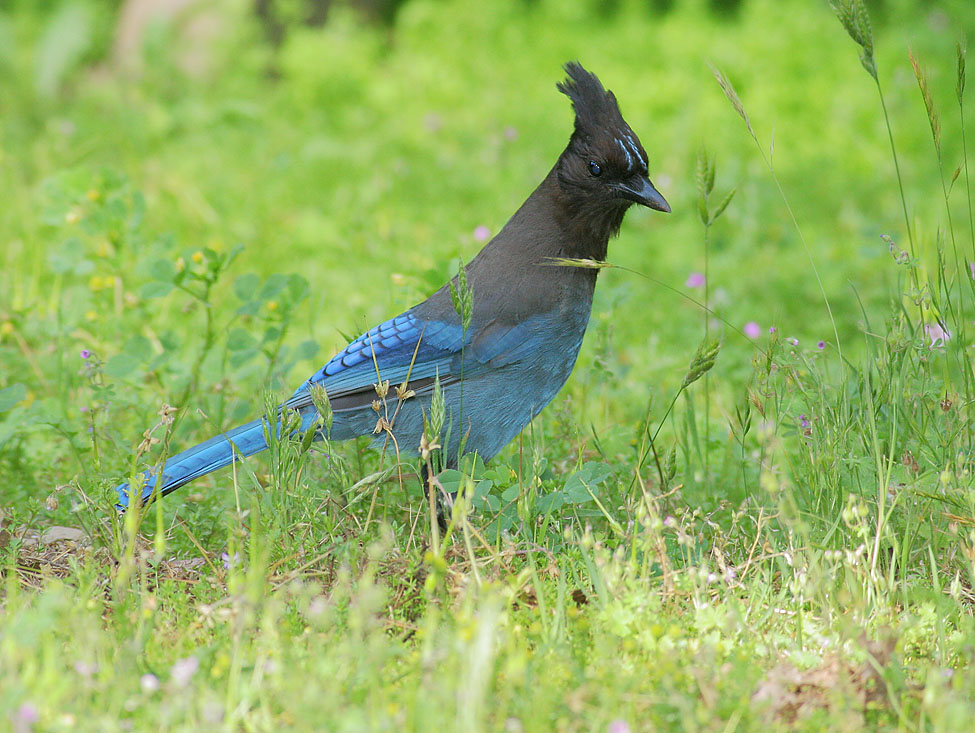Steller's Jay, Cyanocitta stelleri

Steller's Jay is the western counterpart of the famous and similarly beautiful Blue Jay of eastern North America; they are the only two crested jays, constituting genus Cyanocitta. In the west, the other common and widespread jay beside Steller's is the Western Scrub-Jay, generally found more in lowlands and suburban parks and gardens, though I see both species in my yard on the edge of the Santa Cruz Mountain foothills. Steller's inclines toward conifers and higher altitudes. All three of the common North American jay species are intelligent, noisy, aggressive, and fearless, as befits their family, the corvids, which also includes the crows, ravens and magpies.




The pictures above and below show Steller's Jays in their first cycle, the one above in November of its hatch year, the one below in May of its second year. I learned this by asking Peter Pyle if he could help me establish the age of the bird above. Peter responded that it was "a first-fall bird due to the molt limit in the wing - the inner three greater coverts are a brighter blue, contrasting with the dusky-aqua outer coverts. The brownish and dull primaries and already-worn tail are also good clues to first-fall." The first post-juvenal (preformative) molt for birds of this and many other species is typically incomplete in the wing plumage, leaving some juvenal feathers; later prebasic molts are complete, so that all of the greater coverts and other wing feathers are replaced. Later I noticed that the picture below, which I had just taken in May 2016, seemed to showa similar molt limit in the greater coverts, and I asked Peter about this. He replied that this was correct: "This one has replaced six or seven as opposed to three greater coverts, typical variation in extent of the preformative molt of" Steller's Jay. See Peter Pyle's discussion of molt limit as a feature useful for aging passerines in his Identification Guide to North American Birds, Part I, pp. 206-211. My thanks to Peter for his generous help, and his permission to quote his responses to my questions.



My only photo of a Steller's Jay in flight.

The bird above has a severely deformed bill, with the lower mandible twisted and abnormally thin, and the upper mandible broken off at the base. When I first saw the bird in my yard in May of 2007, I thought it surely had a very short life expectancy. But I saw and photographed the same bird in my yard again the next year in July and then in September; in each case, the bird looked healthy, was flying around and calling vigorously in typical Steller's Jay fashion, and was accompanied by a healthy jay with a normal bill, which in September I photographed as shown at the top of this page. I believe they were a mated pair; Steller's Jays are known to have long-lasting monogamous mating relationships. The picture above shows the bird the last time I saw it in my yard, in April 2009, almost two years after my first view. I can't get over the improbable fact that a bird with such badly damaged feeding equipment could survive so long. A complete gallery of my pictures of this bird and its mate can be seen here.